It’s big, it’s heavy and… it’s very expensive. It’s the top-of-the-line portable player of the manufacturer, and beyond that. The Astell&Kern SP3000 is definitely a unique device, through and through. Not only due to its build, materials, and tech specs, but also due to how the company crafted its audio stage.
Disclaimer: I got this unit as a loan from HEA Distribution, Astell & Kern’s distributor in the UK. Additional information is available on the manufacturer’s website. The SP3000 retails for £3,799 in the UK.
TL;DR: recap
| Pros |
Cons |
| + Astounding build quality
+ Very large power output + Smooth, fast UI + The ultimate sophistication in audio electronics in a portable device |
– Very large and very heavy
– Very limited array of applications and services you can install – No vegan option for the case – Jaw-droppingly expensive |
Rating: 9/10
Packaging & Accessories
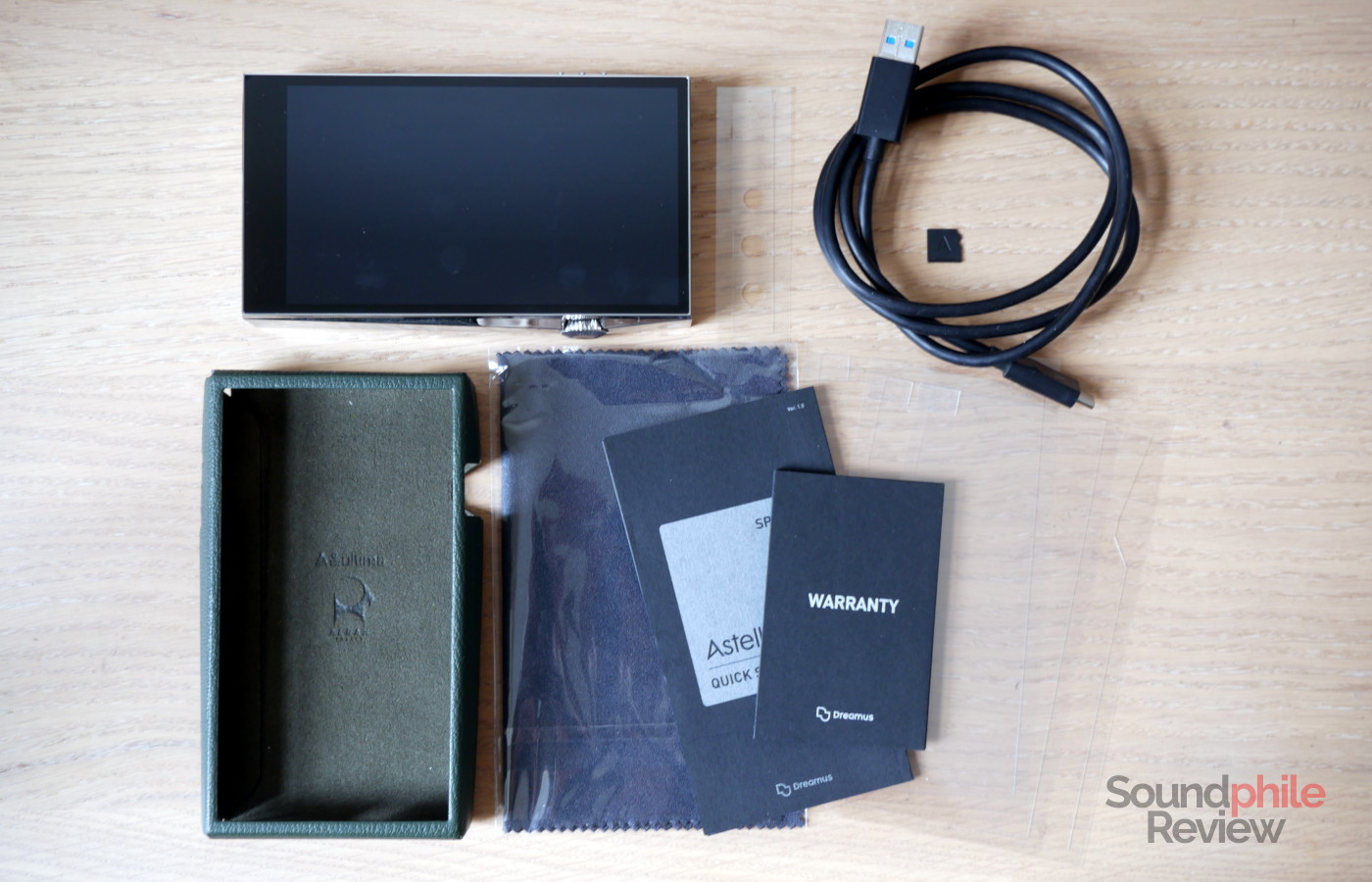
The packaging includes a quick start guide, three screen protectors as well as one for the back and one for the top, a microfibre cloth, a very sturdy and well-made USB-A to USB-C cable, a fake microSD to cover the slot while not in use and a warranty card. There is also a leather case which is made with goat leather in France (no vegan option appears to be available unfortunately). Its function is mostly to protect the body from scratches, as it is quite thin and will provide just a bit of protection from fall damage.
Design & Build
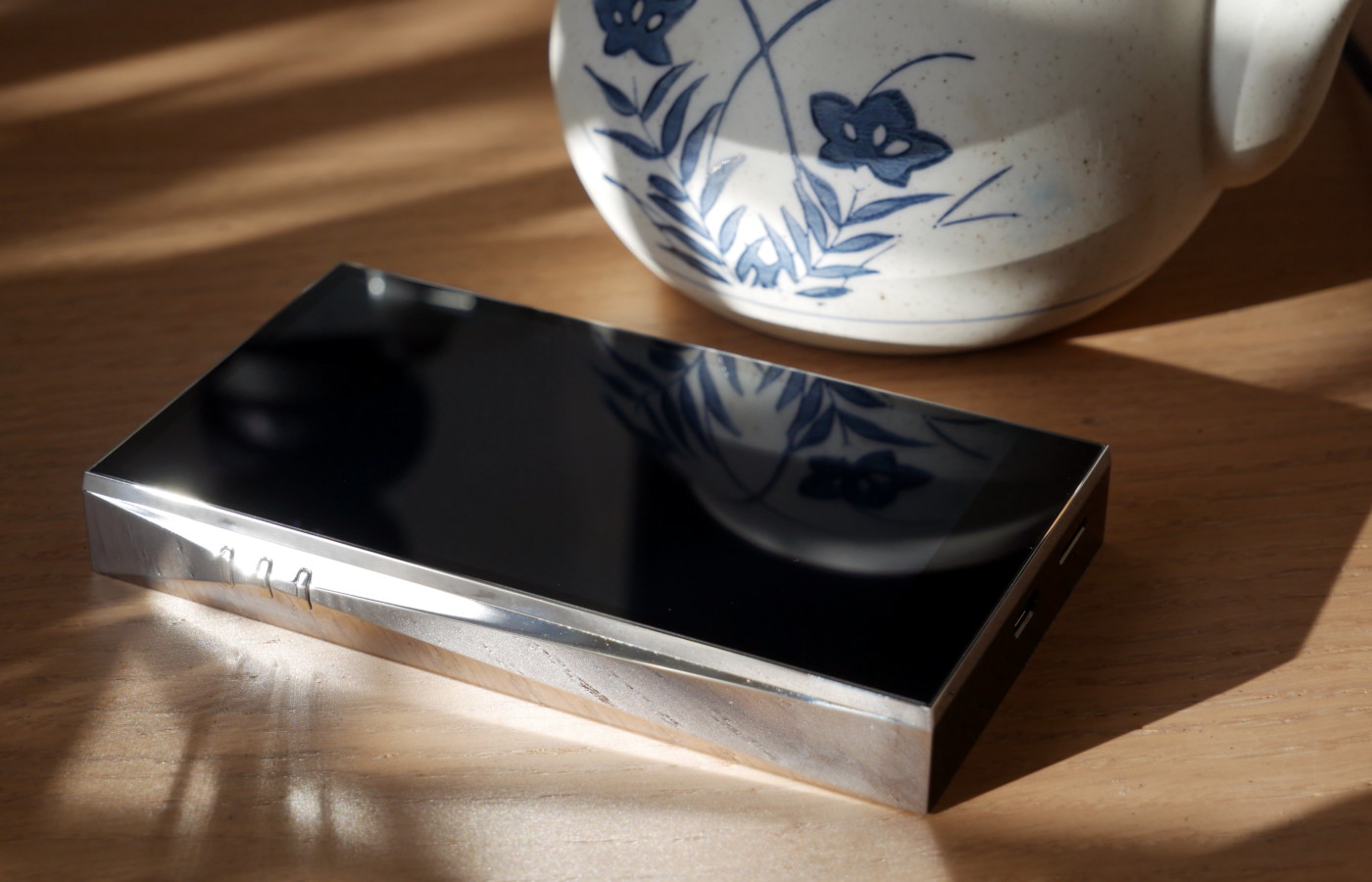
The Astell&Kern SP3000 is massive – there’s no way around that. It weighs 493 g and is 139 x 82 x 13 mm, which is a lot bigger (and a lot heavier) than my already very big Pixel 7 Pro smartphone. The design itself is quite unique and definitely in keeping with A&K’s style, with angular lines and clear-cut angles. The polygonal sides are classic A&K and so is the rather big volume wheel on the right hand side. The back has what appears to be a metal cover, too, though it is a panel which is evidently much thinner than the sides; it has intricate geometric etchings which are in keeping with A&K’s style and reprise the multi-faceted design of the sides.
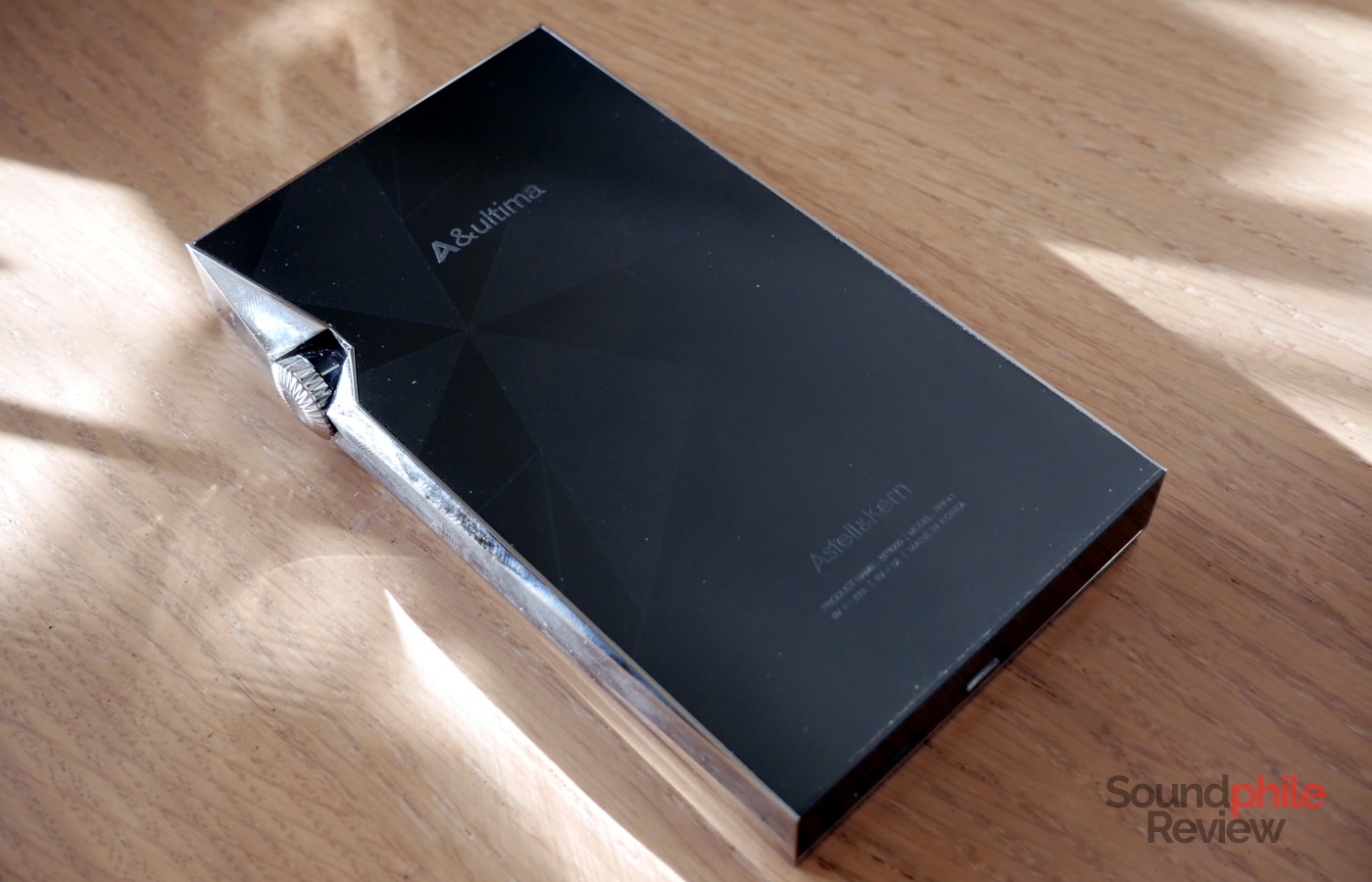
The SP3000 is made using 904L stainless steel. This is an alloy which has been used for almost 40 years in the manufacturing of watches and was chosen due to its superior resistance to corrosion – which comes in really handy when you have to deal with saltwater, as an example. It is also not magnetic, which is again very useful in the context of the small mechanical parts which make up a watch, which would be impacted by a magnetic field and would end up offering you a less-reliable product. It is interesting to note that while these characteristics are very useful in the watch world and especially with diving watches, where there is a practical function that 904L stainless steel carries out, I would argue that in the DAP world things are different. There it is used due to its perceived superior value compared to the more-common 316L or 304 variants (which are actually harder, though less resistant to corrosion); the only characteristic which makes 904L steel “better” in this field is that it is easier to get to a very shiny polish (which is a nightmare to keep clean while you take picture of it, I can assure you!), but that’s an exclusively aesthetic feature with no real functional implications. This doesn’t diminish the good characteristics of the 904L steel used on the Astell&Kern SP3000; I absolutely expect a premium product to use premium materials and this is the case here. However, I think that we need to understand and place this choice correctly.
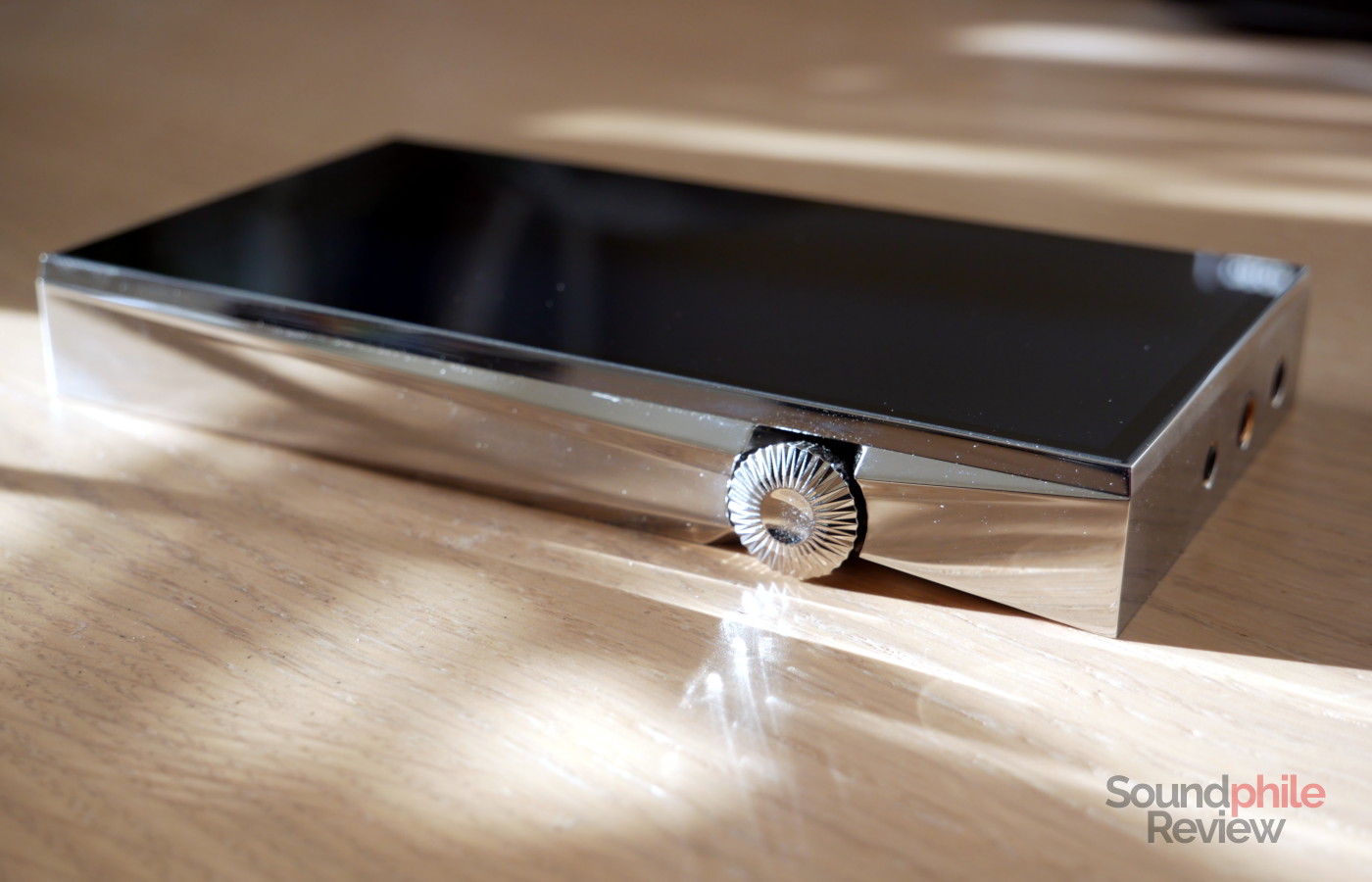
The overall build quality is simply superb, just as you would expect from a device with such a price tag. The Astell&Kern SP3000 looks and feels like a premium device – more than that, it looks and feels like a work of jewellery, or like a high-end watch (a recurring theme!).
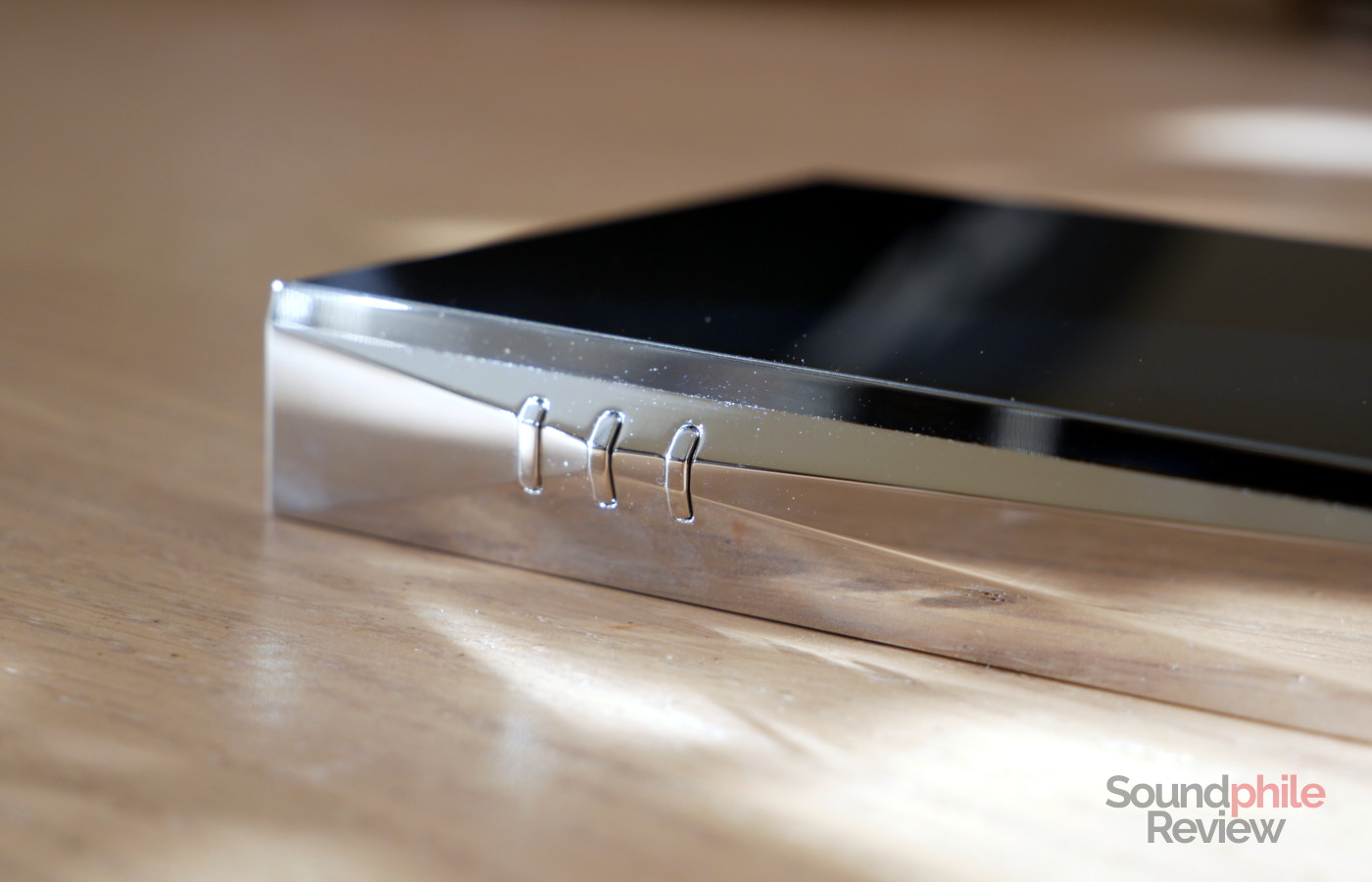
The top side hosts the three jack outputs: unbalanced 3.5 mm as well as balanced 2.5 and 4.4 mm. The bottom hosts the microSD card slot and the USB-C connector, which you can use to charge the battery as well as to transfer data. On this point, I found that USB-A to USB-C cables which I routinely use to transfer data to other devices do not work with the SP3000; USB-C to USB-C cables I have tried, however, work without issues.
As I am writing this specific paragraph, I have spent nearly a month with the SP3000 and I am actually not yet finished with the review. One thing I have learned, though, is that this is not really meant as a device to be used while on the go. The size and especially the weight, and also the fact that there is no locking mechanism that prevents you from accidentally pressing the buttons, make the Astell&Kern SP3000 a device which I find more fitting as a desktop replacement. This is a concept I’m borrowing from the computer world, where there are so-called desktop replacement laptops: these are computers which you can take with you, but which are meant functionally and ergonomically as desktops – i.e. not to be used while sitting in a train station or while you relax on the sofa. The SP3000 is a bit like that: I think it is meant more as a device you can use to enjoy your music from your desk, or from the office, or even from the sofa (so it’s not entirely like laptops…), but not to keep in your pocket while you’re out and about. Nothing stops you from doing so, obviously, and in fact the player works perfectly well wherever you use it; it just isn’t as ergonomic and wieldy as other, smaller devices (as an example, the Hidizs AP80 PRO-X sits at the exact opposite of the spectrum in terms of size and weight). I find this concept of the Astell&Kern SP3000 being a “desktop replacement” DAP very interesting, as I think there is something to be said about a device you can take with you around the house which still has enough power to drive virtually all headphones so that you can enjoy your music wherever you are (be it your desk, the sofa or the bed).
The screen has a diagonal of 5.46 inches and it sports an impressive 1920 x 1080 resolution. It uses what appears to be an IPS panel with very good maximum brightness, which you can read even in the full sunlight. There is unfortunately no sensor to adjust the brightness automatically.
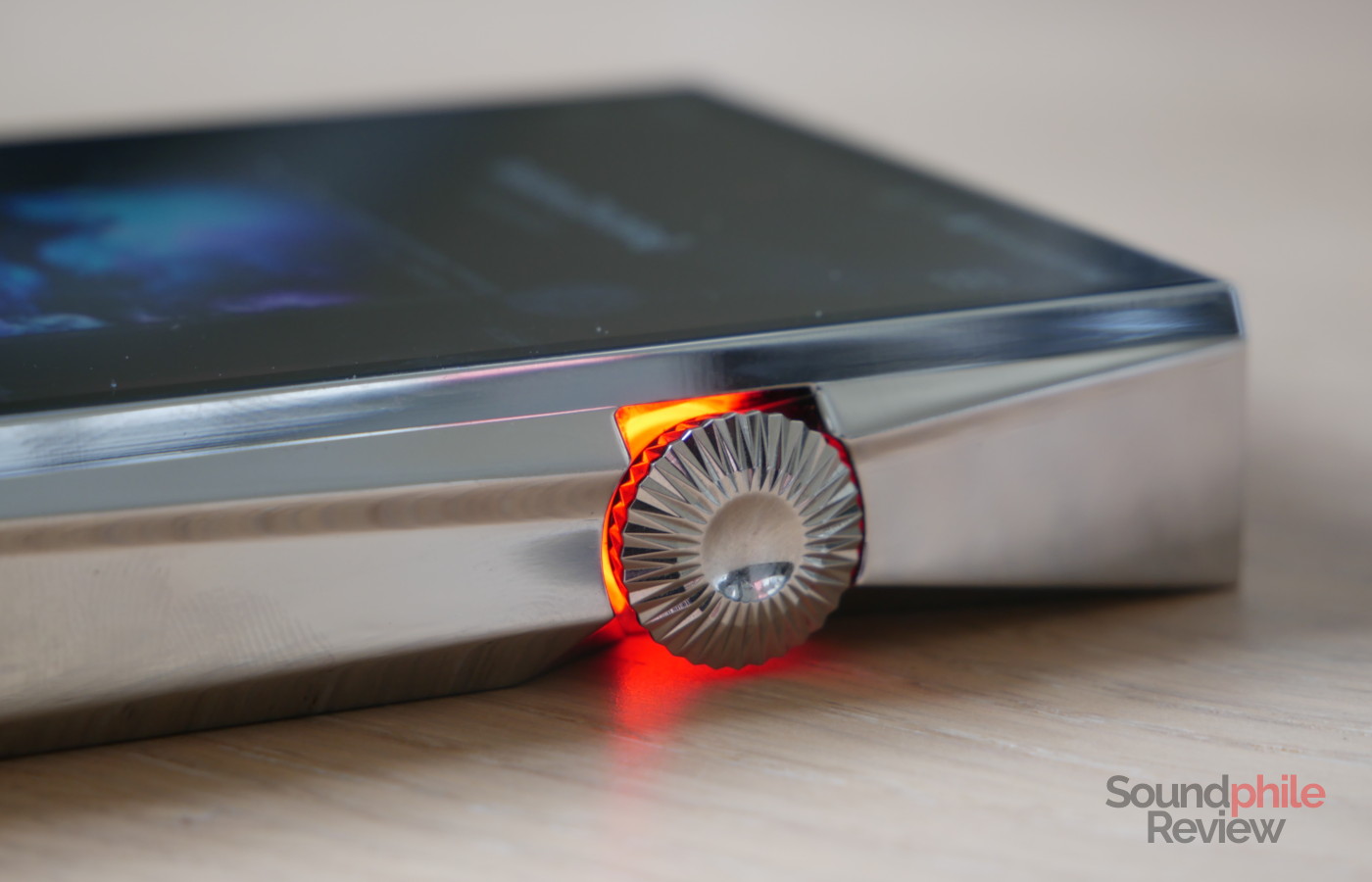
The volume wheel has both tactile and audible clicks as you rotate it, which help you get some feedback when you adjust the volume. It doubles as the power switch: you simply press it to turn the device and the screen on and off. It has a bit of weight to it, so it doesn’t turn too easily, which helps prevent unwanted adjustments when the SP3000 is e.g. in a pocket. There is a coloured status LED hidden in the alcove where the volume wheel is which lights up when the device is powered on and which tells you what type of media is being played (red for 16 bit, blue for 24 bit, green for 32 bit and violet for DSD).
Specifications
Astell&Kern SP3000 |
| DAC chip | 2x AK AK4499EX (balanced) 2x AK AK4499EX (single-ended) |
| Amp chip | A&K Teraton Alpha |
| Suitable headphones impedance | N/A |
| Output impedance |
|
| Maximum output power | Single-ended:
Balanced:
|
| THD+N (@1 kHz) | 0.0006% (single-ended) 0.0004% (balanced) |
| SNR | 126 dB (single-ended) 130 dB (balanced) |
| Operating System | Customised Android |
| Supported formats | PCM up to 32 bit / 768 kHz DSD up to DSD512 MQA File formats: WAV, FLAC, WMA, MP3, OGG, APE, AAC, ALAC, AIFF, DFF, DSF |
Astell&Kern writes on their website that the processor they use is the “Qualcomm Snapdragon 6125”. It’s impossible to know what they really mean: there is no such thing as a “Snapdragon 6125”, but the model number “SM6125” is actually the Snapdragon 665 (a smartphone processor which launched in 2019, so relatively old by today’s standard), and there are also the QCM/QCS6125 processors, which however are meant for POS systems, car head units and other similar devices (and were launched in 2019, too, as far as I can tell). It’s impossible to tell which CPU A&K used due to the fact that, despite the player having an Android operating system, it is strictly locked down and you can’t install any applications which aren’t on the whitelist; this prevents me from installing an application to check the hardware specifications (more on this later).
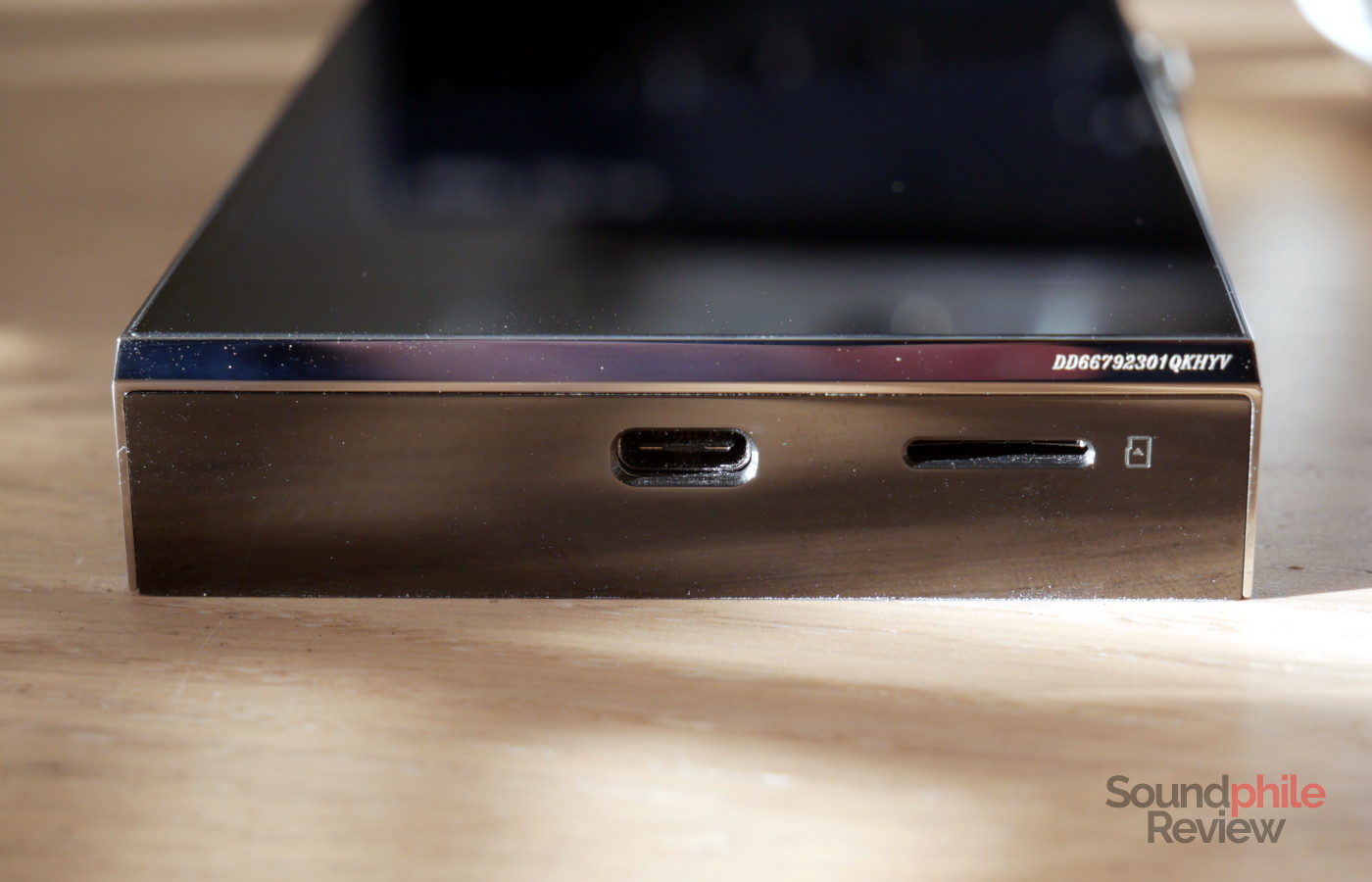
The Astell&Kern SP3000 offers 256 GB of onboard memory, which you can expand further by using a microSD card up to 1 TB. This gives you ample space to store your music collection.
The company used a very interesting approach when designing the digital to analogue conversion stage and the subsequent output to balanced and single-ended connectors: the two signal paths are entirely separated and there is a pair of dedicated DACs for each. Not just that: the digital signal goes through an AK4191EQ, which is a signal modulator used to reduce the noise before feeding the signal to the DAC. There are then two perfectly specular paths for both balanced and single-ended: the signal goes through the AK4191EQ, then it is fed to two AK4499EX DACs, and it is then fed to the amplification stage, which is A&K’s own proprietary Teraton Alpha technology. In order to further reduce noise, the whole amplification stage is shielded with silver.
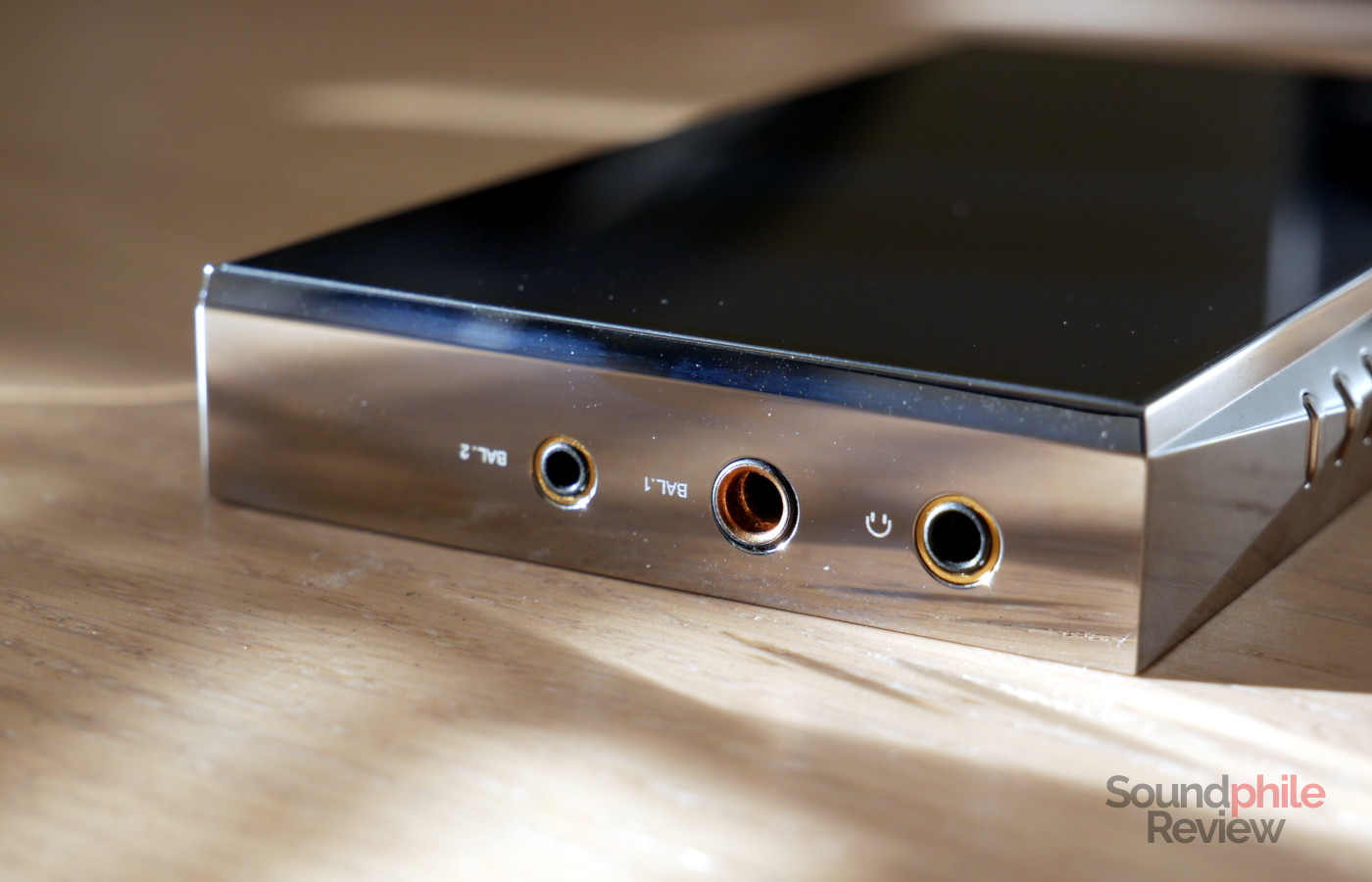
All of this in the never-ending quest for the best purity of the audio signal that can be achieved. By completely separating the balanced and the single-ended signal paths, you can theoretically get better SNR – and as A&K claims to have reached an SNR of 130 dB, maybe there is something to be said about this approach. Just to be clear, it is absolutely overkill, but as this is a top-of-the-line DAP it is also the best place to do this kind of experimentation with cutting-edge, almost-superfluous technology.
The Astell&Kern SP3000 offers output up to 3.3 Vrms (unbalanced) and 6.3 Vrms (balanced), which theoretically equate to 340 mW and 1,240 mW respectively with a 32 Ω load. That’s a very large amount of power for a portable device! This is A&K’s Teraton Alpha tech at play. It is remarkable how the company has been able to squeeze more than 1 W of power output into a device which is, by all intents and purposes, really small for what it offers.
The player offers compatibility with the Bluetooth 5.0 standard, together with support for the SBC, AAC, aptX, aptX HD and LDAC codecs. I have tested the SP3000 with a few Bluetooth devices (Edifier NeoBuds Pro 2, Cleer Alpha, Soundcore Motion X500) and the connection is strong and without interruptions or stuttering, even when moving around.
Software
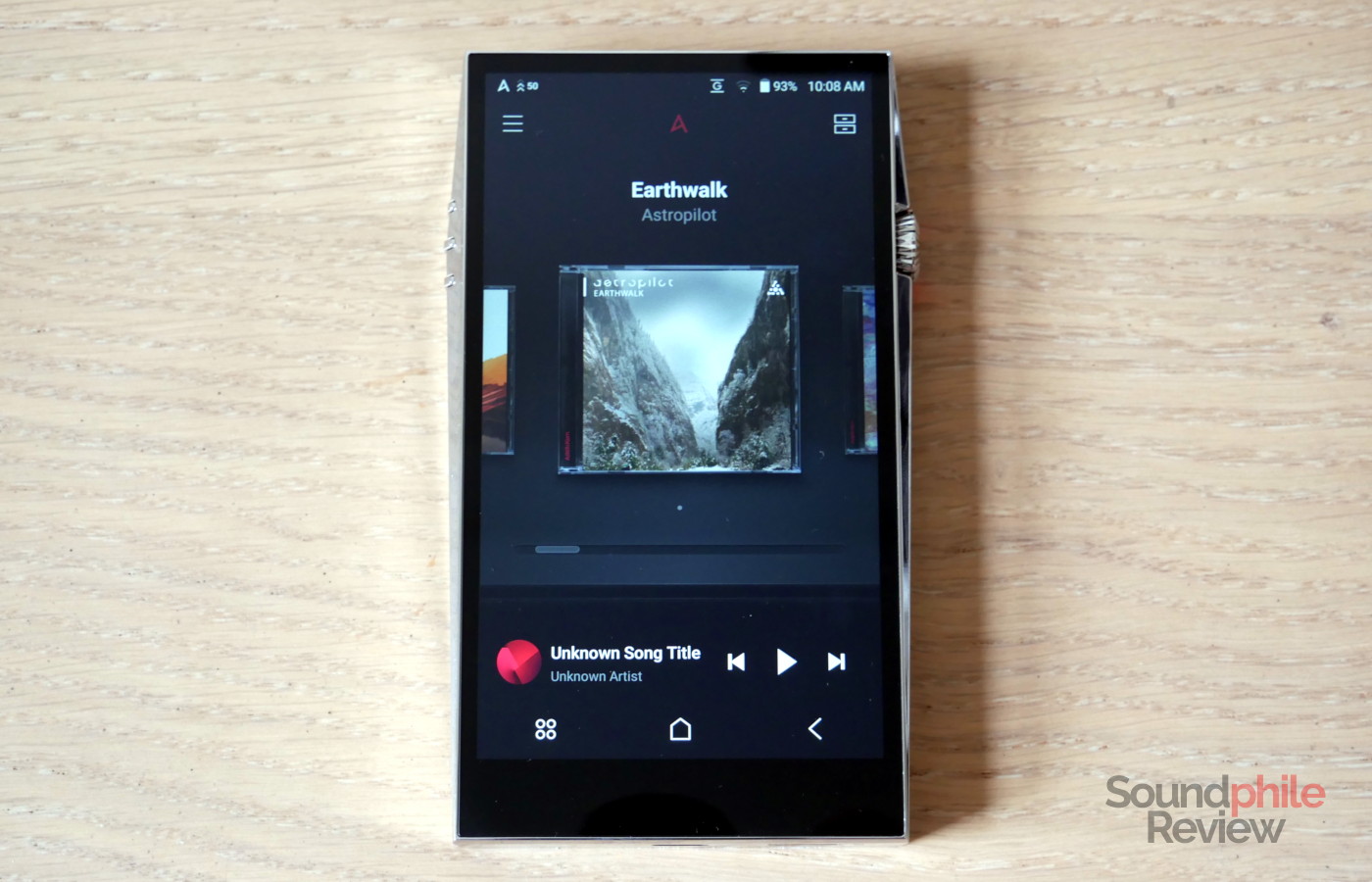
The Astell&Kern SP3000 uses Android as its operating system – the specific version is unknown. It is a heavily customised version with very little resemblance to the operating system used on smartphones. Not only is the traditional launcher hidden: every single part of the UI has been altered by A&K, down to the pull-down shade with quick settings and notifications. This is, by all intents and purposes, a custom operating system which has nothing to do with Android. It is very fast and smooth, with no hiccups nor slowdowns.
The main screen shows a slider with all the albums present on either the device’s internal memory or the microSD, placing the cover images inside CD jewel cases. The effect is really well done and the animations are slick and smooth. This requires the device to scan all the music you have loaded on it, either directly into the internal memory or onto a microSD card; this process is very quick and requires just a few minutes for a 200+ GB collection of FLAC files.
On the bottom of the home screen the system displays the currently playing track with basic controls (previous track, play/pause, next track). On the top left there is a hamburger menu which allows you to access various options: AK Connect (which allows you to play music via DLNA on the local network), Services (to install and manage third-party streaming services and apps), AK File Drop (to transfer files to the player via the network using FTP), Roon Ready, equaliser, DAC filter and timer settings, plus a shortcut to system-wide settings. On the top right there is a small icon which looks like a drawer and it does indeed allow you to open your music library, as if it were held inside a drawer. You can access this by swiping to the left on any blank space on the home screen as well.
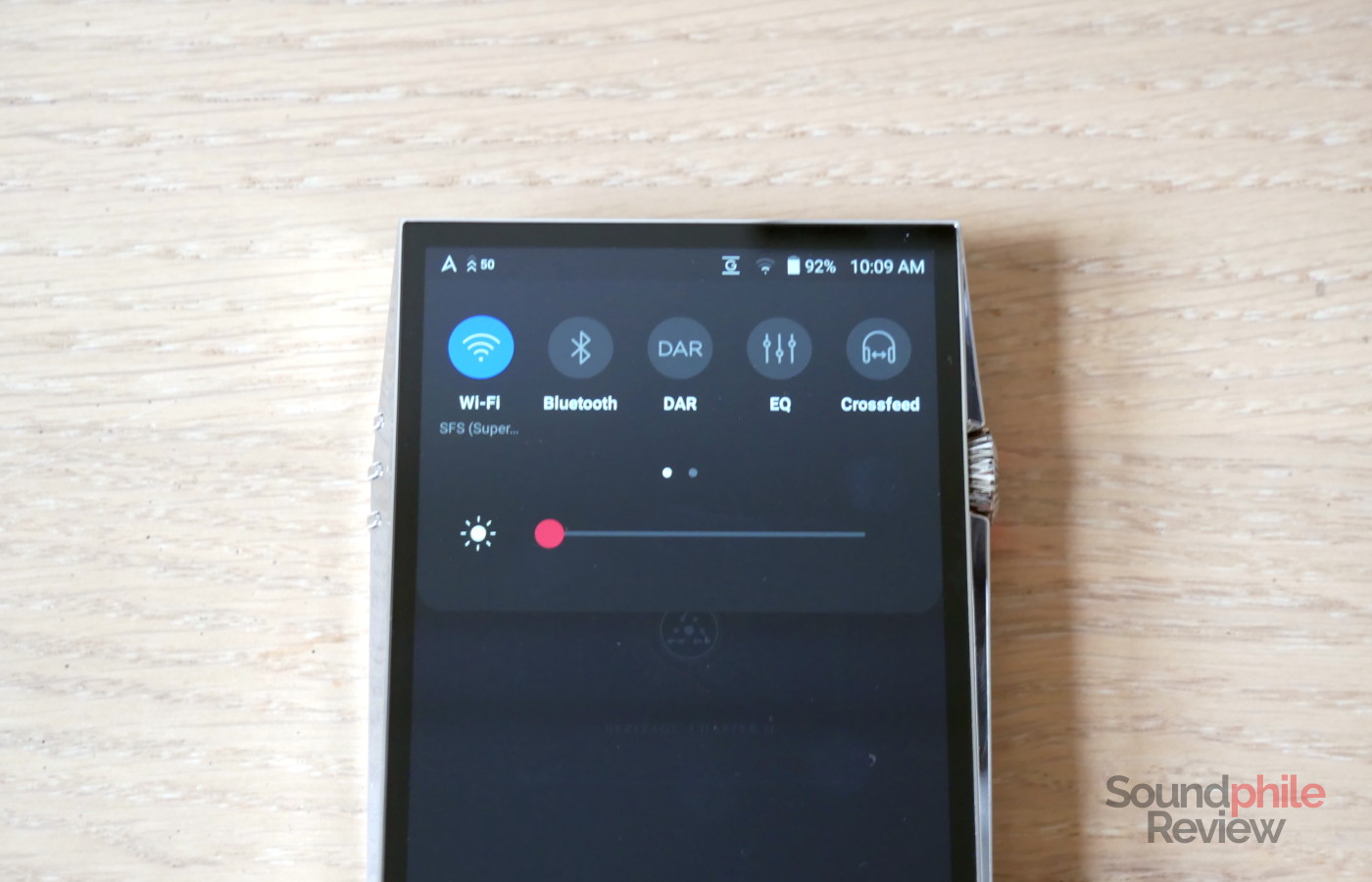
The notification shade allows you to quickly access many features. There is a stripe with all the quick settings, plus the brightness slider and a persistent notification to remove the microSD. The options available in the quick settings are WiFi, Bluetooth, DAR (more on that later), equalisation, crossfeed, AK Connect, line out, gapless playback, wheel lock, ReplayGain, car mode, AK File Drop and settings. The option to lock the volume wheel makes it so you don’t accidentally alter it while the device is in your pocket, but there is unfortunately no option I could find to lock the playback buttons (which I personally find much more useful!).
Clicking on the leftmost button in the navigation bar opens the “services” screen. This allows you to access various third-party applications. Among those pre-installed are TIDAL, V-Link, Qobuz and Roon ARC. You can download more: Spotify, Amazon Music Moov, Deezer, FLO, Apple Music, KKBOX, AWA, Yandex Music, Bugs and Melon. These are the standard Android applications, so there should be no difference between using them on the SP3000 and on an Android smartphone.
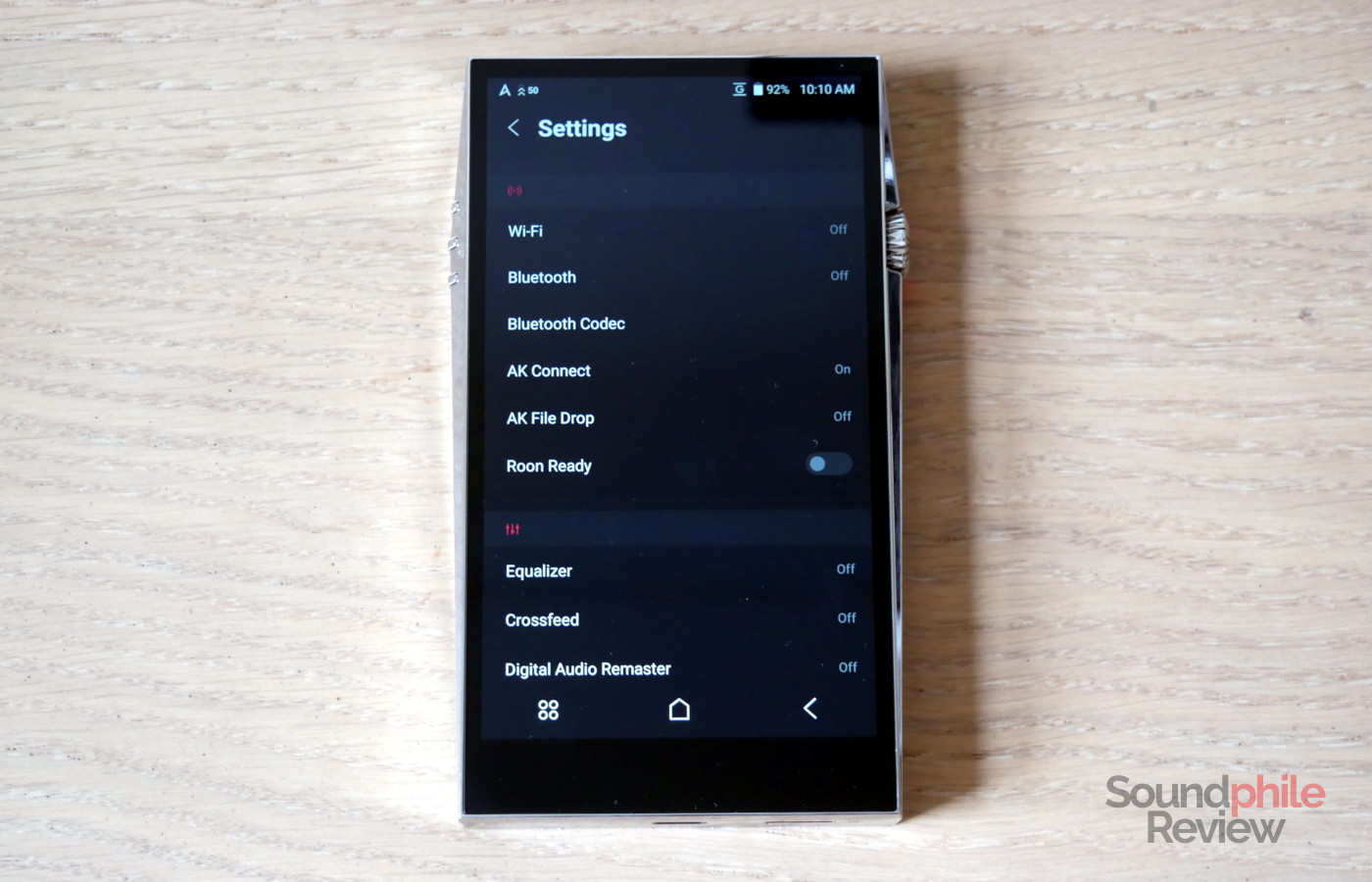
The settings application allows you to set up the device with a lot of different options. There is a connectivity section with WiFi, Bluetooth, Bluetooth codec (you can choose between SBC, AAC, aptX, aptX HD and LDAC), AK Connect, AK File Drop and Roon Read. The next section is about audio and includes the equaliser, crossfeed (with three presets), DAR, DAC filter (sharp/slow roll-off, short delay sharp/slow roll-off, super slow roll-off, low dispersion short delay), L/R balance, gapless playback, ReplayGain, line out and playback settings (where to add new songs to the queue and whether to add one song or all of them). The following section makes it possible to configure a connected CD ripper, the USB mode (DAC or USB disk), USB audio mode (PCM or DoP for DSD content, plus an option to enable software decoding for MQA), S/PDIF conversion (to force conversion of all content to a fixed bit depth and sample rate), as well as car mode which displays an interface more convenient to use while driving.
In the penultimate section are all the system settings: notification panel (to customise the quick settings tiles you see), volume limit, screen brightness, double-tap screen to wake, LED indicator (the one hidden behind the volume wheel), date and time, device name, language (you can choose between English, Korean, Chinese, Russian, German, French and Spanish), keyboard (you can install third-party ones, like Google’s), timers (auto power off after idle, screen timeout and sleep timer) as well as download folder location. Lastly, we find the system update, information and reset options.
The equaliser is quite possibly the best I’ve seen on a portable device: not only it offers 20 bands with a 0.1 dB granularity, but also a full parametric EQ with frequency, gain and Q factor. One thing to note, however, is that enabling the equaliser reduces the volume significantly.
DAR stands for “Digital Audio Remaster” and is basically an upsampling feature, so that all audio is upsampled to 352.8 / 384 kHz PCM or 11.2 / 12.2 MHz DSD (with PCM which is converted to DSD, but not vice-versa).
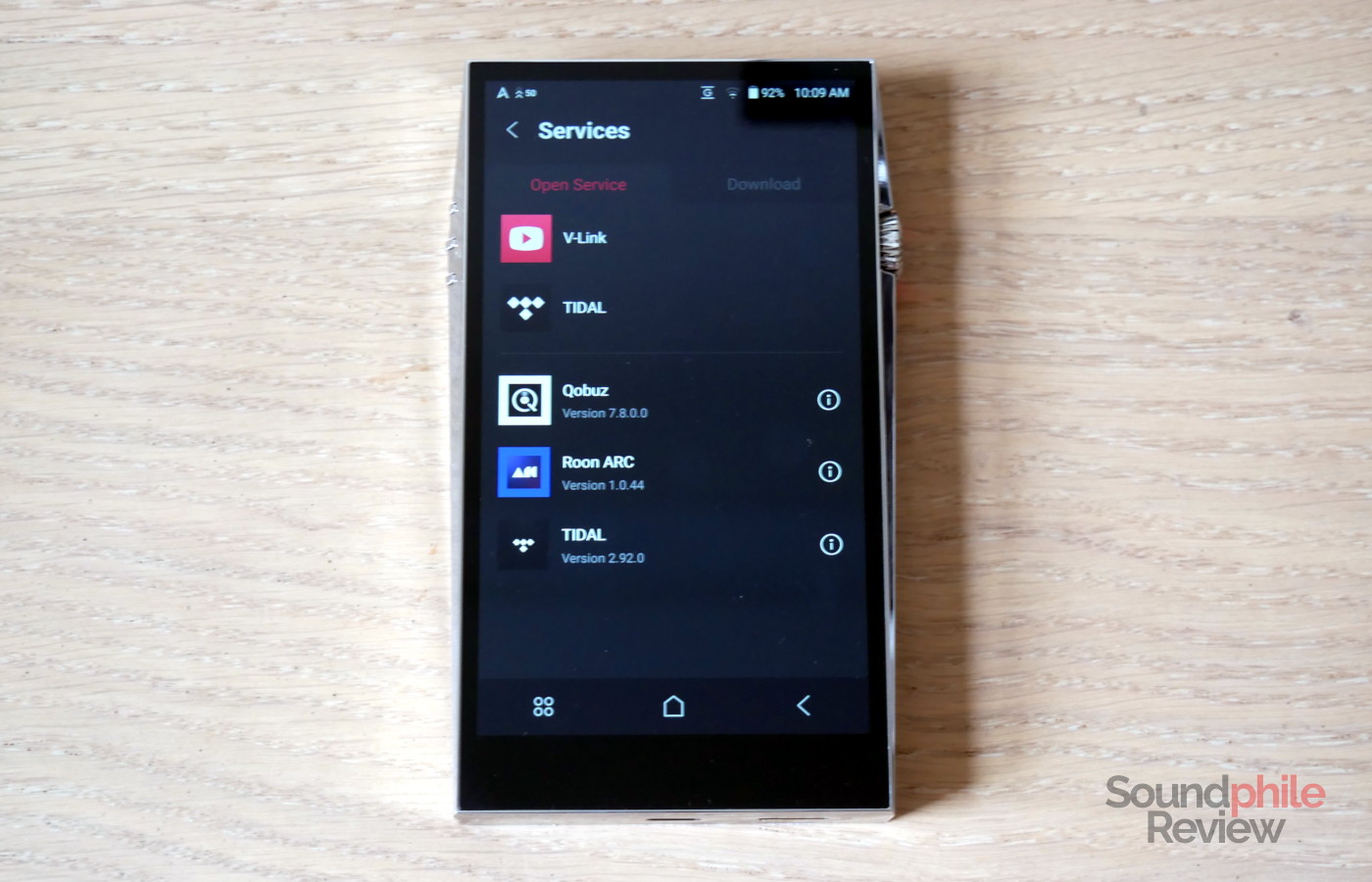
As I mentioned before, despite using Android, the system on the SP3000 takes an approach which limits the applications that you can use. This is in order to ensure that you cannot load malware on the device, as well as that you will have a consistently good experience with the device. You can only install applications on a whitelist defined by Astell&Kern (which is not public, as far as I can tell); as mentioned above, most widely used services are available and work without issues, so there’s a 99% chance you won’t have any problems.
However, this approach can have some drawbacks in case you would like to use applications or services which A&K didn’t include in the whitelist. As an example, there are plenty of applications to access self-hosted streaming services which are not installable on the SP3000 despite being relatively popular. To name just a few names: Jellyfin (which streams music and video from a Jellyfin server), Emby (same, but from an Emby server), Finamp (music from Jellyfin), Symphonium (plays local music as well as streams from a variety of sources, including Jellyfin and Subsonic-compatible servers). These, and many more, applications won’t work on the SP3000 as you simply won’t be able to install them at all.
It is important therefore to understand whether you would like to use or need software which A&K doesn’t provide access to. Looking at the future, allowing to install applications for example through ADB (which is not accessible at all, as far as I can tell) would ensure that only advanced users who know what they’re doing would install unsupported applications and that could be a nice middle ground. For the time being, however, from the perspective of allowing arbitrary applications and services, A&K players need to be treated as if they didn’t have Android: they are their own thing, which works remarkably well and with a top-tier UI and UX, but they are not as flexible as other Android-powered devices.
Battery Life
Battery life heavily depends on what headphones you are using, but it’s overall very good. The estimate A&K provides of about 10 hours is realistic: on top of experiencing a similar battery life throughout my time with the device (which however can be difficult to track accurately), I used my HiFiMAN HE-560 for half an hour with volume at 55/150 and the battery went down by 5%, which aligns with A&K’s estimate.
Sound
I have tested the Astell&Kern SP3000 using a variety of headphones and earphones, including: Sennheiser HD 6XX, HiFiMAN Arya, HiFiMAN HE-560, AFUL Magic One.
As I briefly mentioned previously, the SP3000 has a lot of power on hand which it can use to drive even high-impedance headphones without issues. That is the case with the HD 6XX, which you can drive to high volume while maintaining its peculiar sound signature intact (and it goes up to 500 Ω around 100 Hz, which is no joke!). Speaking of output power, the SP3000 has, if anything, too much power when used with low-impedance, high-sensitivity earphones: even when using it with volume on 1, the lowest possible level, it can play music at too high a volume. That also depends on your taste, of course – I like to stay around 65 – 70 dB and anything more than that I find fatiguing, but you might find 80 dB and more to your liking. A&K could include a “gain” option in a future update to make it easier to reduce the output for low-impedance, high-sensitivity earphones.
The Astell&Kern SP3000 is entirely neutral and indistinguishable from other neutral devices such as the SMSL DO400: it stays entirely out of the way to allow you to experience music as it is, with no interference that would colour the sound. I find this great as this is actually what high-end audio is all about: the less you meddle with the sound, the better things are; the less you add to it, the more faithful it is to the original – which is the actual point of high fidelity. The SP3000 delivers on this point just like you would expect a high-end piece of equipment would do. What is remarkable is that it does so with all the headphones I tried, even the high-impedance and/or low-sensitivity ones which are normally more demanding.
The crossfeed feature offers a slightly wider and deeper soundstage; it is a small difference and it doesn’t alter the sound entirely, but it is noticeable in how it affects depth especially.
I’ve tested DAR and I couldn’t really hear a difference. That is actually expected as algorithms cannot really reconstruct what’s not there (or not faithfully, and at least not yet: we’ll see what AI can do in the future), so it is reasonable that the information stays the same irrespective of the container that holds it.
Final Thoughts
The Astell&Kern SP3000 is a very interesting device from many different perspectives. It is an extreme device from all points of view: not just in price, which makes it one of the most expensive portable consumer electronics devices you can buy, but in size, weight, craftsmanship, output options and power output, too. It also has a massive, bright screen and a silky-smooth UI and UX. In short, it’s almost impossible not to like it, or at the very least to appreciate it as the product of that chimeric idea we all share as people passionate about audio, which is the never-ending search for the perfect replication of live music. I think that’s an asymptote, something you can get arbitrarily close to but never reach, but I applaud Astell&Kern for delivering a device which rivals desktop-class DACs and amplifiers while still fitting in your hand. And adding a bunch of features on top, too, as you can manage your own collection directly on the device or even stream content from the Internet.
The only possible issue with the Astell&Kern SP3000 is its price. Is it really worth almost £4,000? That’s something you need to answer for yourself – but I personally think the price tag has more to do with positioning the device as a luxury, a “halo” product rather than the price reflecting the actual difference in sound quality you can get. But, again, how much do you value being able to use your favourite headphones wherever you are in a superbly-crafted package, with fantastic software to sweeten the deal? That’s what you need to answer, and only you can do that.
At the time of publishing, there is also a promotion thanks to which you can get the Pathfinder IEM (worth £1899!) free of charge if you buy the SP3000. There are various retailers offering this promotion, as an example Audio Sanctuary is doing it in the UK.

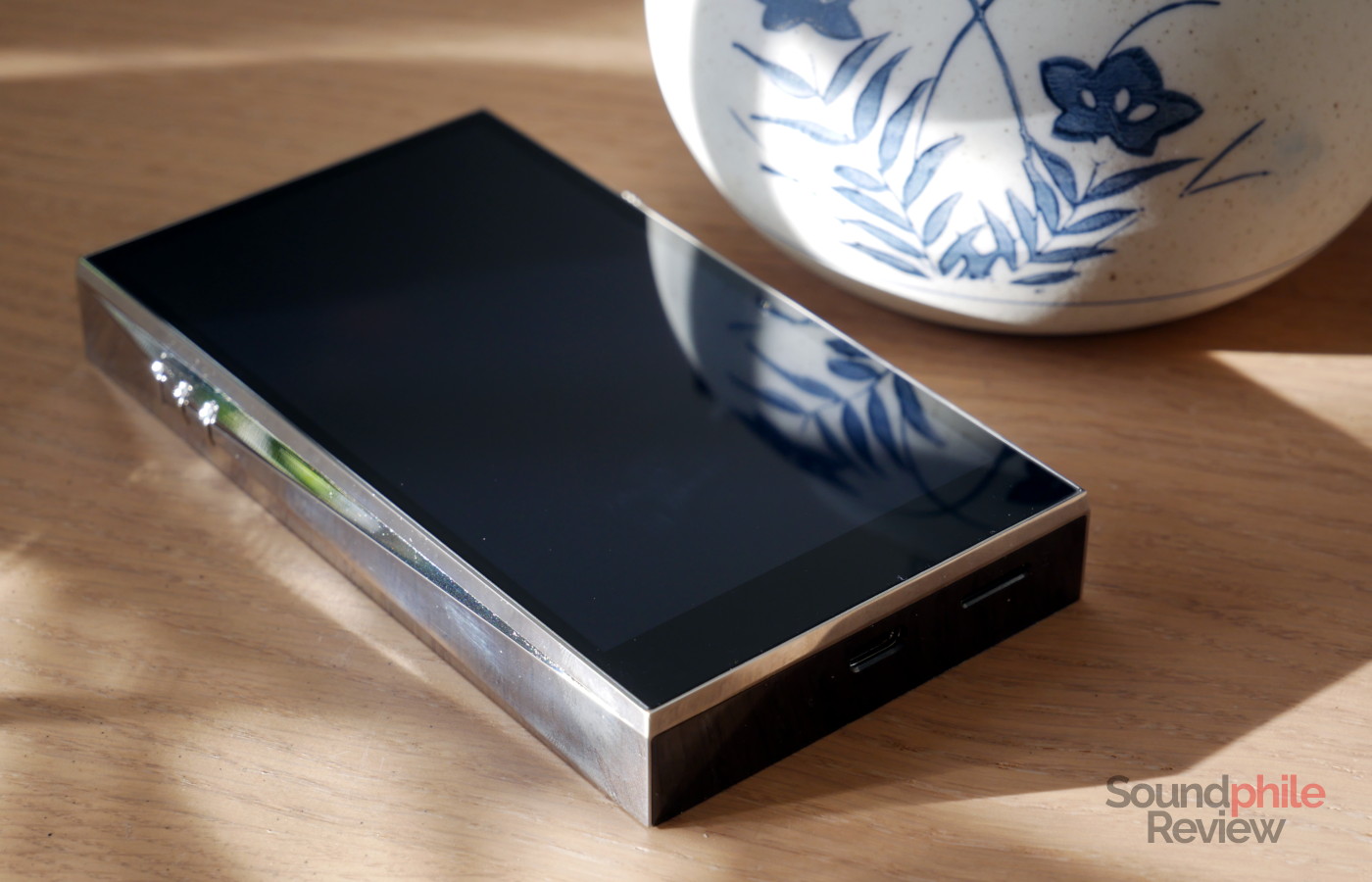


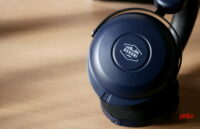

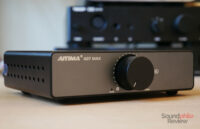
I am thinking to buy IEM for my SP3K.
Does Campfire Pathfinder is suitable with this? Does the IEM was tuned with SP3K?
Hello David,
It was made in collaboration with AK, so I guess that has to be expected. Considering we’re talking about a DAP which is demonstrably neutral, however, I wouldn’t worry too much about it as it will pair well with anything.